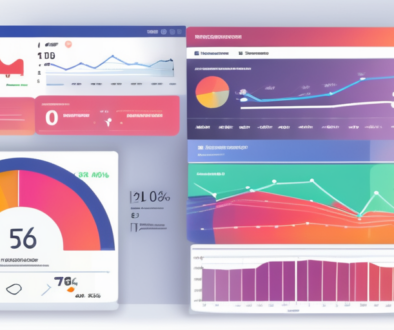Key Google Ad Metrics you Can’t Afford to Ignore
In today’s digital landscape, advertising through Google Ads is one of the most effective ways for businesses to reach their target audience. However, the success of these campaigns is not just about launching ads; it hinges upon tracking the right metrics. This article will delve into the most important Google Ad metrics, providing insights and best practices for tracking Key Performance Indicators (KPIs) effectively.
Understanding Google Ad Metrics
Google Ad metrics are essential parameters used to gauge the performance of your advertising campaigns. They help marketers understand how well their ads are performing and provide actionable insights to optimize them. By analyzing these metrics, businesses can make data-driven decisions that enhance their advertising strategies. In today’s digital landscape, where competition is fierce and consumer behavior is constantly evolving, having a firm grasp on these metrics is more important than ever. Marketers must not only track performance but also adapt to changes in user engagement and market trends to stay ahead.
Defining Key Performance Indicators (KPIs)
Key Performance Indicators (KPIs) are quantifiable measurements that reflect how effectively a company is achieving its business objectives. In the context of Google Ads, these indicators provide insights into different aspects of ad performance, such as visibility, engagement, and conversions. KPIs serve as a compass guiding marketers toward optimizing their campaigns for better results. Common KPIs include Click-Through Rate (CTR), Cost Per Click (CPC), and Conversion Rate, each offering a unique lens through which to evaluate ad success. Understanding these metrics allows marketers to fine-tune their messaging and targeting strategies, ensuring that they resonate with their intended audience.
Importance of Tracking Google Ad Metrics
Tracking Google Ad metrics is crucial for several reasons. First, it enables businesses to identify which ads are effective and which are underperforming. This knowledge allows for reallocating budgets to the most successful campaigns. Second, continuous tracking helps advertisers to adjust their strategies in real-time, ensuring higher ROI and effective audience targeting. Ultimately, the optimization based on these metrics can lead to increased sales and brand recognition. Moreover, by regularly monitoring these metrics, businesses can uncover trends and patterns that may not be immediately visible. For instance, seasonal fluctuations in consumer behavior can be identified, allowing marketers to tailor their campaigns accordingly. Additionally, understanding audience demographics and preferences through metrics can lead to more personalized advertising efforts, ultimately fostering stronger customer relationships and loyalty.
Different Types of Google Ad Metrics
When discussing Google Ad metrics, it is vital to differentiate between various types, as each serves a unique purpose. Here are some of the pivotal metrics that marketers should focus on:
Click-Through Rate (CTR)
Click-Through Rate (CTR) is a key metric that indicates the percentage of people who click on an ad after seeing it. A higher CTR signifies that an ad is relevant and compelling to the audience.
To calculate CTR, use the formula:
- CTR = (Total Clicks / Total Impressions) x 100
Monitoring CTR helps advertisers refine their ad copy and targeting strategies. Additionally, a low CTR can signal that an ad may need adjustments, whether it’s the wording, visuals, or even the audience targeting. A/B testing different versions of an ad can provide insights into what resonates best with potential customers, ultimately leading to improved engagement and performance.
Conversion Rate
The conversion rate measures the percentage of users who take a desired action after clicking on an ad, such as making a purchase or signing up for a newsletter. A high conversion rate indicates that the ad and landing page are effectively aligned to resonate with the audience’s needs.
To compute the conversion rate, use the following formula:
- Conversion Rate = (Conversions / Total Clicks) x 100
Boosting conversion rates is often more valuable than simply increasing traffic levels. Understanding the user journey is crucial; analyzing where users drop off can help marketers optimize their funnels. Implementing clear calls-to-action (CTAs) and ensuring a seamless user experience can significantly enhance conversion rates, making it essential to continually test and refine these elements.
Cost Per Click (CPC)
Cost Per Click (CPC) is the amount an advertiser pays each time a user clicks on their ad. Understanding CPC is essential for budget management and determining the overall ROI of advertising campaigns.
Advertisers can calculate CPC using this formula:
- CPC = Total Spend / Total Clicks
Monitoring CPC helps businesses stay competitive while ensuring their ad spend aligns with the value generated from conversions. Additionally, keeping an eye on industry benchmarks for CPC can provide context for performance. If CPC is trending upward, it may be time to reassess bidding strategies or explore alternative keywords that could yield better results without breaking the bank.
Quality Score
Quality Score is a metric used by Google to measure the quality and relevance of your ads, keywords, and landing pages. It ranges from 1 to 10, with higher scores indicating that your ads are more relevant to users’ search queries.
A higher Quality Score can lead to lower CPCs and better ad placements, resulting in improved ad performance. Factors influencing Quality Score include the expected CTR, ad relevance, and landing page experience. Therefore, focusing on creating high-quality content that aligns with user intent can not only enhance Quality Score but also foster trust and credibility with potential customers.
Impression Share
Impression Share is the percentage of times your ads were shown compared to the total number of times they could have been displayed. This metric provides insight into the visibility of your ads in the competitive landscape.
To compute Impression Share, consider this formula:
- Impression Share = (Impressions / Total Eligible Impressions) x 100
By tracking Impression Share, businesses can gauge their market presence and identify opportunities for increased exposure. A low Impression Share could indicate that your ads are not being shown due to budget constraints or low ad rank, prompting a review of bidding strategies or keyword targeting. Understanding seasonal trends and adjusting campaigns accordingly can also help maximize visibility during peak times, ensuring that your brand remains top-of-mind for consumers when they are ready to engage.
How to Track Google Ad Metrics
Effectively tracking Google Ad metrics involves utilizing the right tools and methods. Here are two primary ways to monitor these metrics:
Using Google Ads Interface
The Google Ads interface is the primary tool for monitoring campaign performance. Users can access various reports and dashboards to track essential metrics. Within the platform, advertisers can customize their view to prioritize the metrics that matter most to their campaigns.
Utilizing features like the “Campaigns” tab can help in quickly assessing performance across various campaigns and ad groups. Additionally, the “Ad Schedule” feature allows advertisers to analyze performance based on different times of the day or days of the week, enabling them to optimize their ad spend by focusing on peak performance periods. This granular level of tracking can lead to more informed decisions and ultimately, a higher return on investment.
Utilizing Google Analytics
Google Analytics complements Google Ads by providing deeper insights into user behavior post-click. By linking Google Ads with Google Analytics, advertisers can analyze metrics like bounce rates, average session duration, and user engagement on the website.
This data is invaluable for aligning ad strategies with actual performance on landing pages, leading to improved conversion optimization. Furthermore, Google Analytics offers advanced segmentation options that allow advertisers to break down their audience into specific demographics or behavior patterns, providing a clearer picture of which segments are responding best to their ads. This level of detail not only enhances targeting strategies but also helps in crafting tailored content that resonates with different audience segments, thereby maximizing the effectiveness of ad campaigns.
Interpreting Google Ad Metrics
Tracking metrics is only the first step; interpreting those metrics is where the real insights lie. Let’s break down how to analyze and make sense of key Google Ad metrics.
Analyzing CTR Results
A high CTR often indicates effective ad copy and appropriate targeting, while a low CTR might suggest the need for a more compelling message or refined targeting. To improve CTR, businesses may experiment with different headlines, calls to action, and audience segments. Additionally, A/B testing can be a powerful tool in this regard, allowing advertisers to compare variations of their ads to see which resonates more with their audience. It’s also beneficial to analyze the performance of ads across different devices and platforms, as user behavior can vary significantly depending on where they encounter the ad.
Understanding Conversion Rate Outcomes
Conversion rates should be analyzed in the context of overall business goals. If the rate is lower than expected, consider revisiting the landing page experience to ensure it aligns with user expectations generated by the ad. Factors such as page load speed, mobile responsiveness, and the clarity of the call to action can significantly influence conversion rates. Furthermore, integrating user feedback and conducting usability tests can provide valuable insights into potential barriers that may be preventing conversions, allowing for targeted improvements.
Making Sense of CPC
CPC figures should be viewed alongside generated revenues. If CPC is rising but conversions are stagnant, this may indicate inefficiencies in the ad targeting or creative strategies. Regularly reviewing these figures can help in adjusting bids accordingly. It’s also important to consider the lifetime value of a customer when evaluating CPC; a higher initial cost may be justified if the customer ultimately leads to significant repeat business. Additionally, exploring alternative bidding strategies, such as target CPA or maximize conversions, can help optimize spending and improve overall campaign performance.
Evaluating Quality Score
A low Quality Score can hinder ad performance. Evaluating the factors affecting the Quality Score is crucial; advertisers should focus on improving ad relevance and optimizing landing pages to ensure better scores moving forward. Regularly updating ad copy to reflect seasonal trends or current events can also enhance relevance. Moreover, utilizing negative keywords can help filter out irrelevant traffic, further improving the Quality Score by ensuring that ads are shown to the most appropriate audience.
Impression Share Insights
A low Impression Share could suggest budget constraints or keyword competitiveness. By identifying these gaps, advertisers can adjust their bidding strategy or budget allocation to enhance visibility. Focusing on improving Impression Share can increase overall campaign effectiveness. Additionally, exploring long-tail keywords may provide opportunities to capture more impressions without facing the intense competition present in broader keyword categories. Understanding the competitive landscape through tools like auction insights can also provide a clearer picture of where adjustments are needed to improve share.
In conclusion, tracking and interpreting Google Ad metrics is vital for any business looking to maximize the effectiveness of their advertising efforts. By monitoring CTR, Conversion Rate, CPC, Quality Score, and Impression Share, businesses can refine their strategies, enhance their online presence, and ultimately achieve better advertising results.



